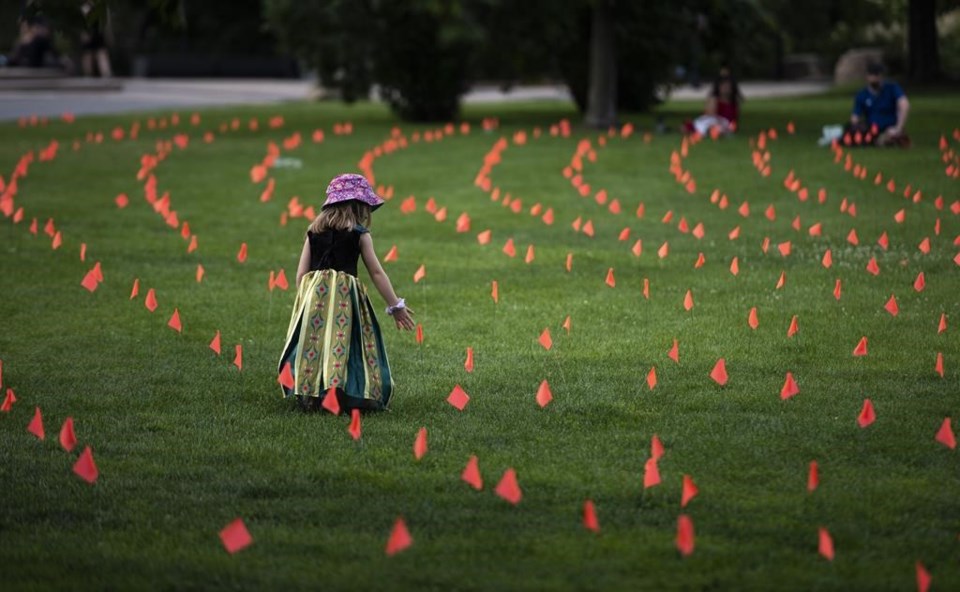KENORA, Ont. — Searches for unmarked graves at cemetery grounds linked to a former northern Ontario residential school have uncovered 171 “plausible burials”, the Wauzhushk Onigum Nation said Tuesday, with other sites still to be investigated.
The First Nation says with the exception of five grave markers, the rest of the plausible burials are unmarked.
Federal and provincial ministers were expected to meet with the First Nation Tuesday for discussions, including about resources to continue the investigation.
"Both Canada and Ontario have continued to express their commitment to reconciliation, to the truth, and to healing of our communities," Chief Chris Skead said in a news release Tuesday.
"Finding the truth and exercising caution on everything touched by this genocidal legacy comes at a price and it's a price our Treaty partners need to be prepared to pay. That is true reconciliation."
According to records provided by the Truth and Reconciliation Commission, at least 36 children died at the St. Mary's Residential School near Kenora, Ont., the First Nation said.
"Based on conversations with survivors, and their testimonies, the true number is believed to be significantly higher," it said.
The anomalies were found during studies conducted by its technical, archeological and ground-penetrating-radar team, and informed by testimony from survivors, the First Nation said.
The studies uncovering the 171 anomalies were first launched in May 2022. The First Nation is now seeking resources to get greater certainty on the number of plausible graves in the cemetery grounds and to conduct investigations into sites near the school.
Those sites, which are not covered by the current search, have been identified by survivor testimony, archeological assessment, and archival investigations, the First Nation said.
Between 1897 and 1972, more than 6,000 Indigenous children attended the residential school.
This report by The Canadian Press was first published Jan. 17, 2023.
The Canadian Press

